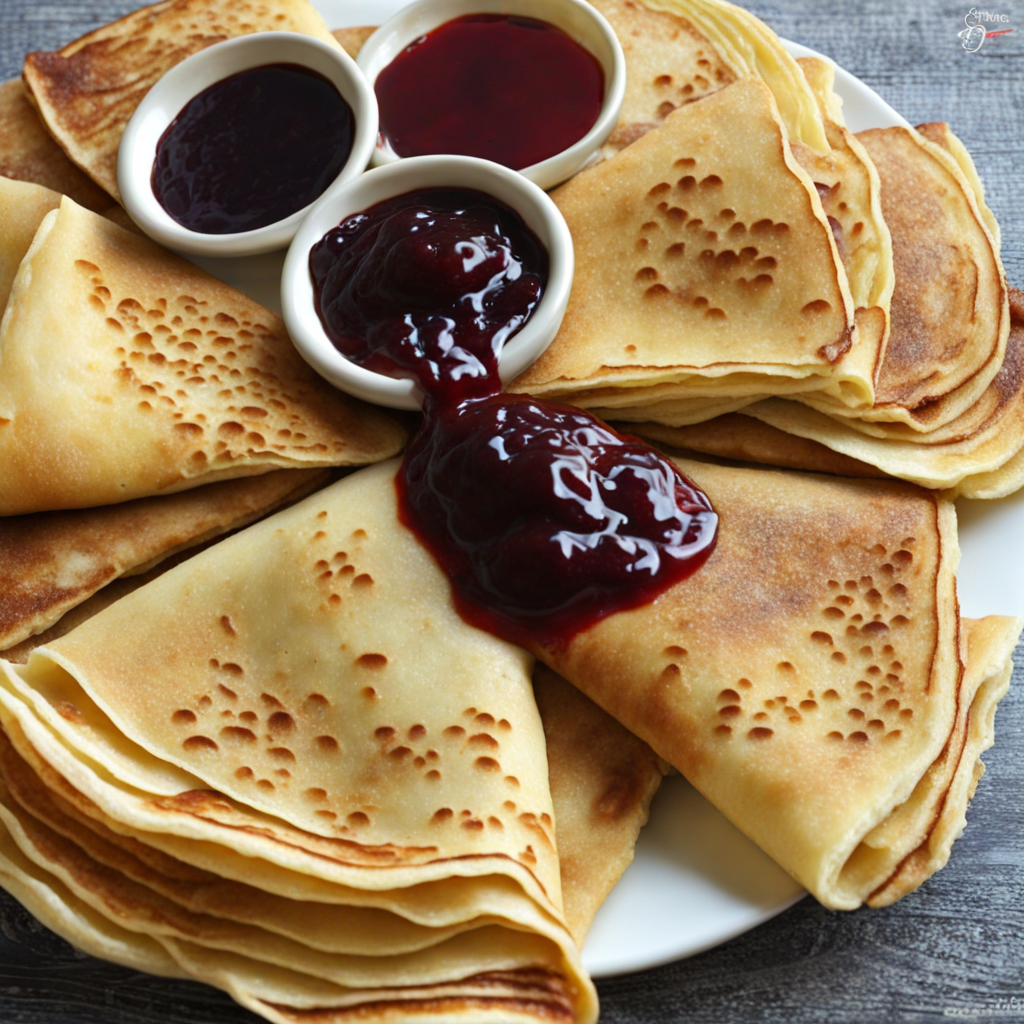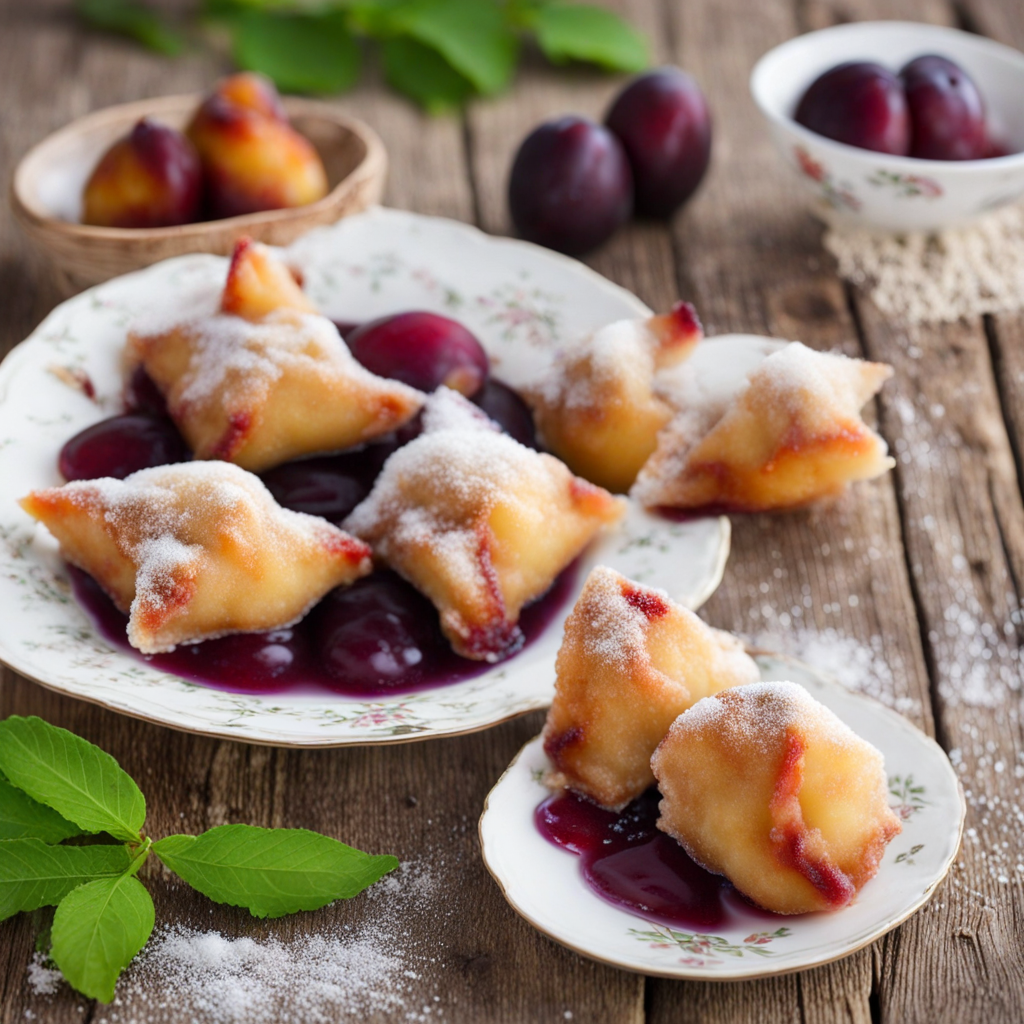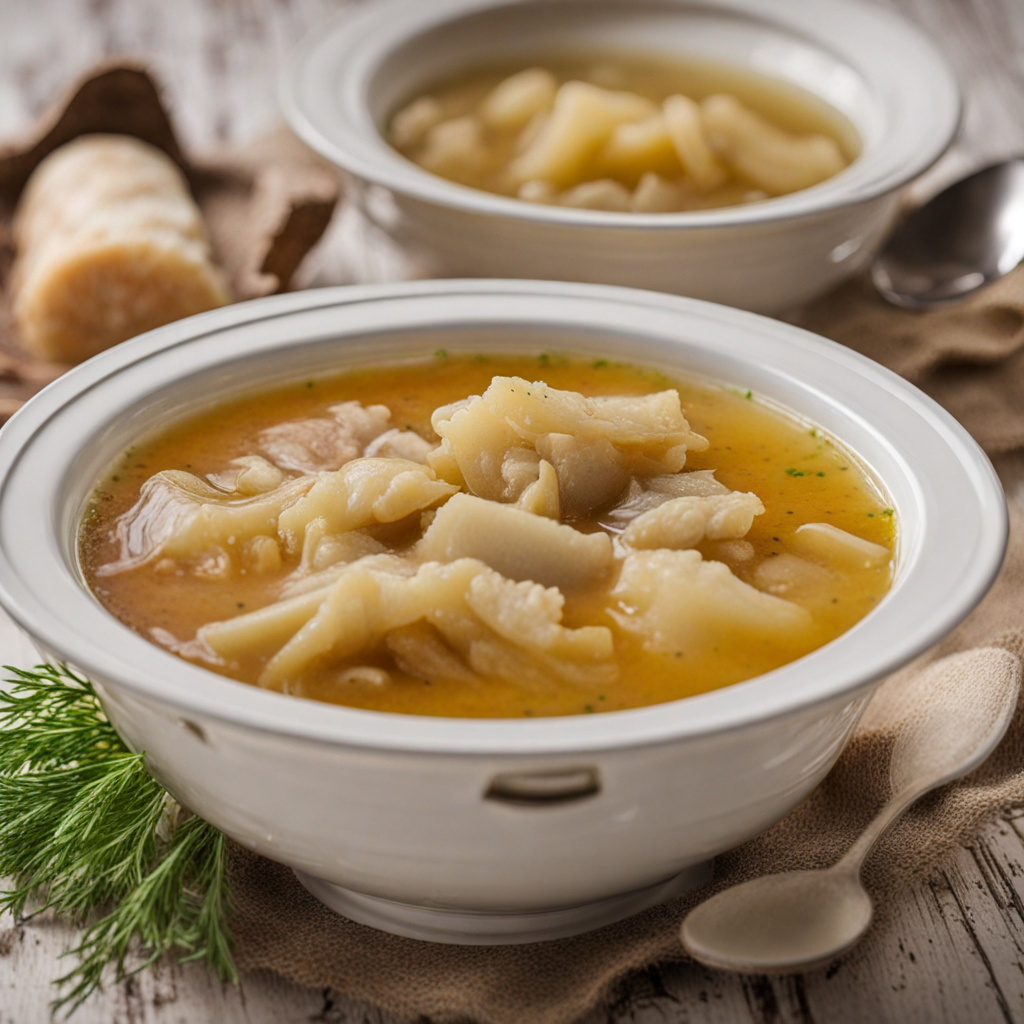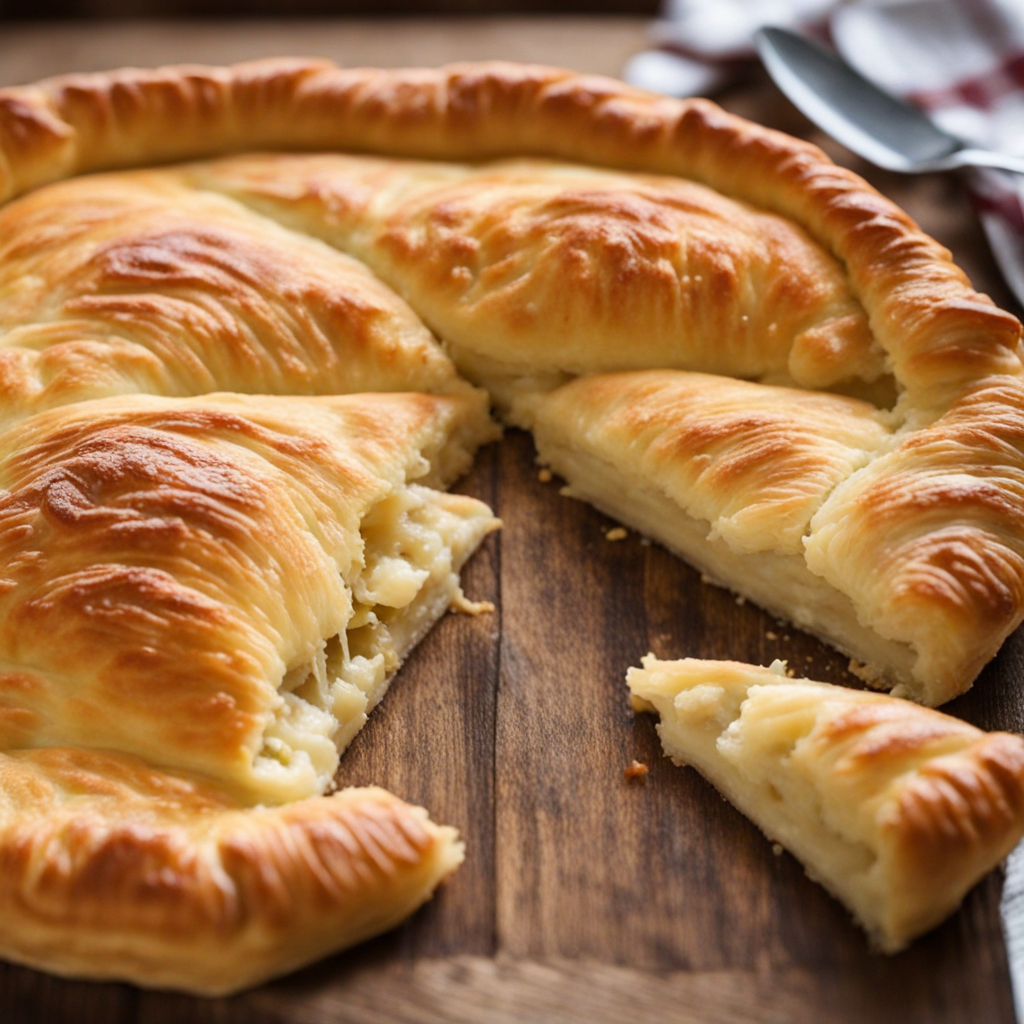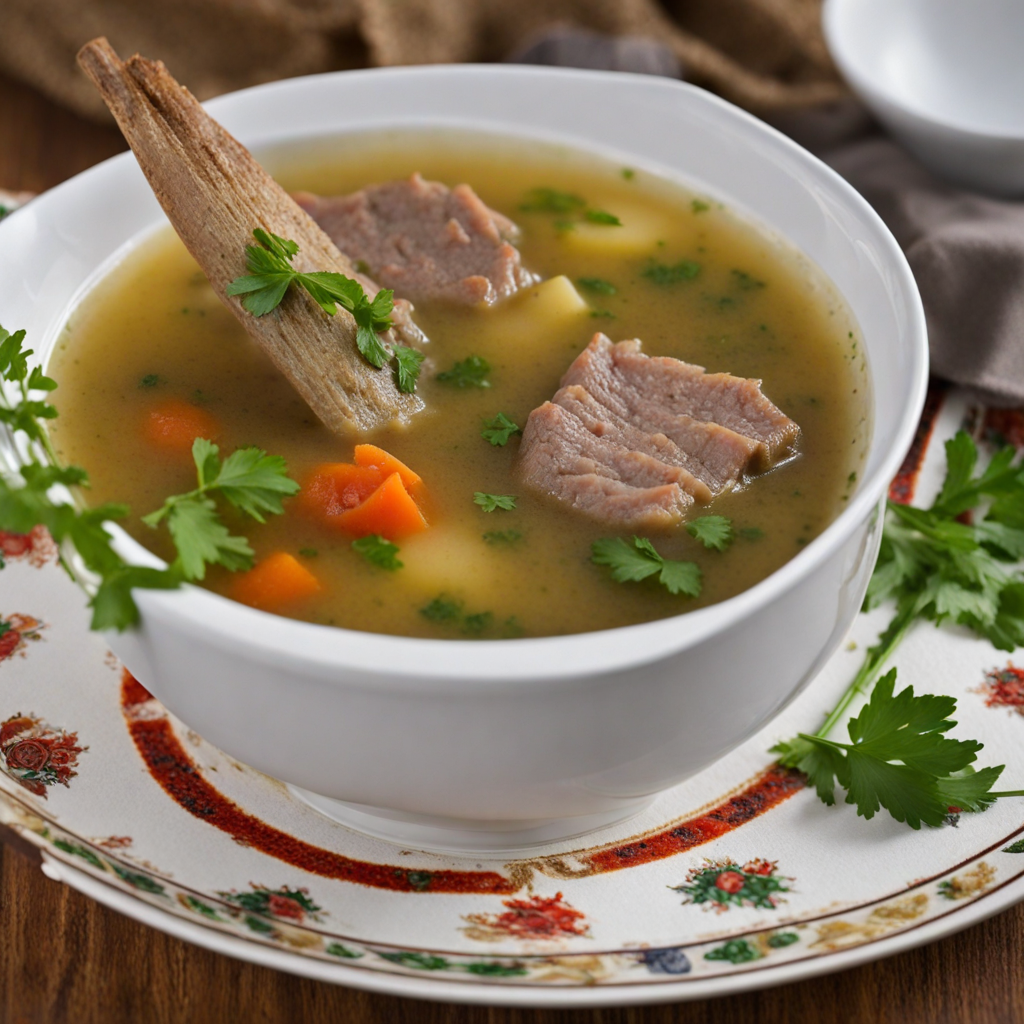Romanian Pancakes
Romanian pancakes, known as "clătite," are a delightful culinary treat that showcase the rich flavors and textures of Romanian cuisine. These thin, crepe-like pancakes are made from a simple batter of flour, eggs, milk, and a pinch of salt, resulting in a light and tender texture that serves as the perfect canvas for a variety of fillings. The pancakes are typically cooked on a flat skillet until they are golden brown, creating a slightly crispy exterior that contrasts beautifully with their soft interior. What makes Romanian pancakes truly special is the diverse range of fillings that can be used, catering to both sweet and savory palates. Sweet clătite are often filled with a mixture of sweetened cheese, fruit preserves, or Nutella, and then rolled or folded before being dusted with powdered sugar. On the savory side, they can be stuffed with a filling of sautéed mushrooms, ham, or spinach, offering a delightful burst of flavor in every bite. This versatility allows clătite to be enjoyed as a breakfast dish, dessert, or even a main course. Traditionally served warm, Romanian pancakes are often accompanied by a dollop of sour cream or a drizzle of honey, enhancing their flavor profile. They are commonly enjoyed at family gatherings, celebrations, or simply as a comforting meal at home. With their delicate texture and the ability to be customized according to personal taste, Romanian pancakes promise a delightful gastronomic experience that invites food lovers to explore the heart of Romanian culinary heritage.
How It Became This Dish
The History of Clătite: Romania’s Beloved Crepes Clătite, the Romanian counterpart to French crêpes and Italian crespelle, are thin pancakes that have carved a significant niche in the culinary tapestry of Romania. These delightful creations are not just a staple of Romanian cuisine; they embody cultural heritage, regional diversity, and the evolution of food practices over centuries. #### Origins The origins of clătite can be traced back to ancient times when various forms of flatbreads were made across Europe. The word "clătite" itself is derived from the verb "a clăti," meaning "to flip," which perfectly encapsulates the method of cooking these pancakes. While the exact timeline is difficult to pinpoint, it is believed that clătite emerged during the Middle Ages when cooking techniques began to evolve with the introduction of new ingredients and culinary practices brought by trade and migration. Romania’s geographical position, situated at the crossroads of Eastern and Western cultures, significantly influenced its food traditions. As such, clătite likely absorbed elements from neighboring countries. The Ottoman Empire, which had a profound impact on Romanian cuisine, introduced various sweet and savory fillings that would later become synonymous with clătite. #### Cultural Significance In Romanian culture, clătite are more than just a meal; they are a symbol of hospitality and familial love. Traditionally, clătite are served during festive occasions, family gatherings, and celebrations, embodying a sense of togetherness. They are versatile, allowing for sweet or savory fillings, which can vary regionally and seasonally. Sweet clătite are often filled with a mixture of cheese, sugar, and vanilla, then topped with sour cream or fruit preserves. Nutella and chocolate are modern twists that have gained popularity, especially among younger generations. The savory variants, on the other hand, can be stuffed with a blend of meats, mushrooms, or vegetables, showcasing the adaptability of clătite to various tastes and preferences. #### Development Over Time As Romania has evolved politically and socially, so too has the clătite. In the early 20th century, during the interwar period, clătite became more widely recognized as a national dish, often featured in cookbooks and culinary exhibitions. This period saw the rise of the middle class, and with it, a burgeoning interest in gastronomy. Home cooks began to experiment with fillings, leading to a greater variety of flavors and presentations. The advent of communism in the mid-20th century brought about significant changes in food availability and preparation methods. Traditional recipes were often simplified due to shortages of ingredients. However, clătite endured as a beloved dish, providing comfort and nostalgia during challenging times. Families would gather in kitchens, sharing recipes passed down through generations, ensuring that the essence of clătite remained intact even in the face of adversity. Post-1989, after the fall of communism, Romania experienced a culinary renaissance. The reintroduction of ingredients previously unavailable allowed for renewed creativity in the kitchen. Chefs and home cooks alike began to explore international influences, incorporating global flavors into their clătite. This period marked a fusion of traditional and contemporary cooking styles, resulting in innovative recipes that retained their roots while embracing modernity. #### Regional Variations The beauty of clătite lies in their adaptability, which is reflected in the regional variations found throughout Romania. In Transylvania, for instance, clătite may be filled with a rich mixture of cottage cheese and herbs, often served with a side of sour cream. In the Banat region, it’s common to find clătite stuffed with a mixture of ground meat and spices, reflecting the region's diverse cultural influences from Hungary and Serbia. In Moldova, clătite are often served as a dessert, filled with sweetened cheese, and topped with fruit syrups or jams. The Dobrogea region, influenced by the Black Sea, sees clătite filled with seafood, showcasing the coastal flavors of the area. Each variation tells a story of local ingredients, culinary traditions, and the historical context of the region. #### Modern-Day Clătite In contemporary Romania, clătite are ubiquitous, found in homes, restaurants, and street food stalls. The rise of food culture and gastronomy has led to a renewed interest in traditional recipes, with chefs seeking to honor the past while pushing culinary boundaries. Gourmet variations of clătite have emerged, incorporating ingredients like truffle oil, exotic spices, and artisanal cheeses. Food festivals celebrating Romanian cuisine often feature clătite, highlighting their role not only as a beloved dish but also as a cultural emblem. These events foster a sense of pride in Romanian culinary heritage, encouraging younger generations to explore their roots and keep traditions alive. #### Conclusion Clătite are more than just thin pancakes; they are a testament to Romania’s rich culinary history and cultural identity. From their humble beginnings to their status as a national favorite, clătite have evolved alongside the Romanian people, absorbing influences and adapting to changing tastes while remaining a cherished symbol of home and family. As Romanians continue to celebrate their culinary heritage, clătite stand as a delicious reminder of the past, a versatile canvas for modern creativity, and a beloved dish that unites generations. Whether enjoyed at a festive gathering, a home-cooked family meal, or a trendy café, clătite embody the spirit of Romania, inviting everyone to share in their warmth and flavor.
You may like
Discover local flavors from Romania



